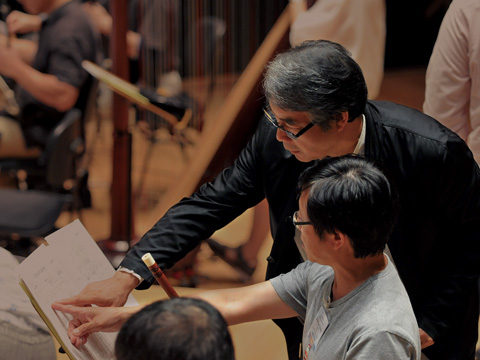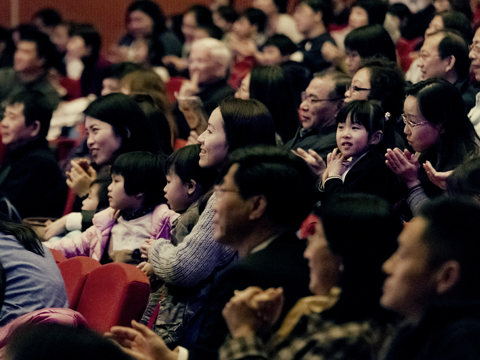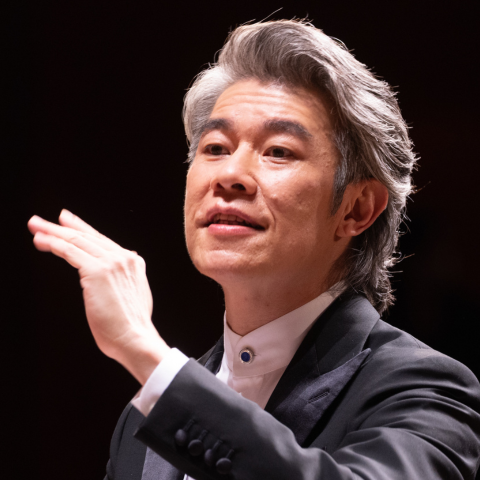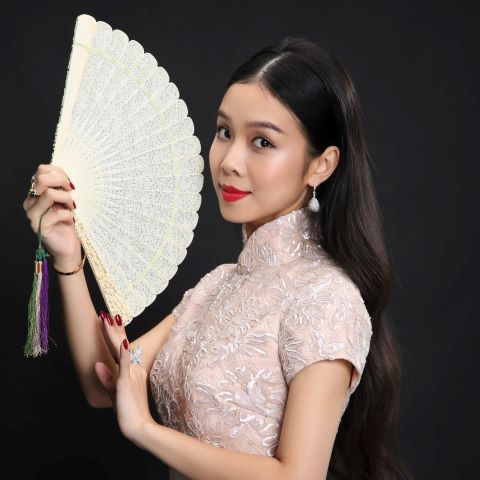
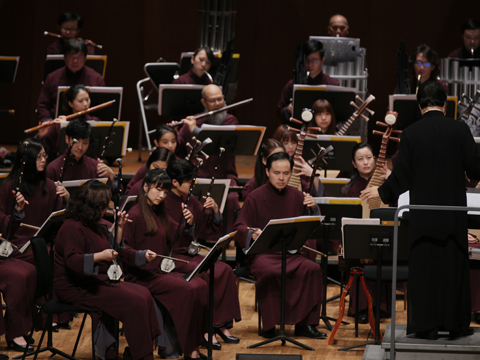
HKCO
Hong Kong Chinese Orchestra Environmental, Social and Governance Artistic Director and Principal Conductor for Life Orchestra Members Council Advisors & Artistic Advisors Council Members Management Team Vacancy Contact Us (Tel: 3185 1600)

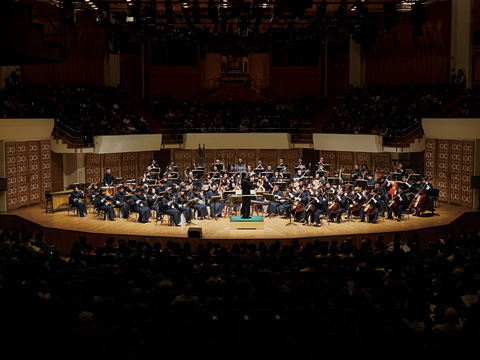
Concerts

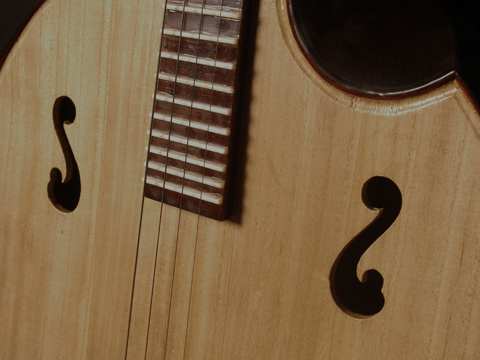
Education
The HKCO Orchestral Academy Hong Kong Youth Zheng Ensemble Hong Kong Young Chinese Orchestra Music Courses Chinese Music Conducting 賽馬會中國音樂教育及推廣計劃 Chinese Music Talent Training Scheme HKJC Chinese Music 360 The International Drum Graded Exam

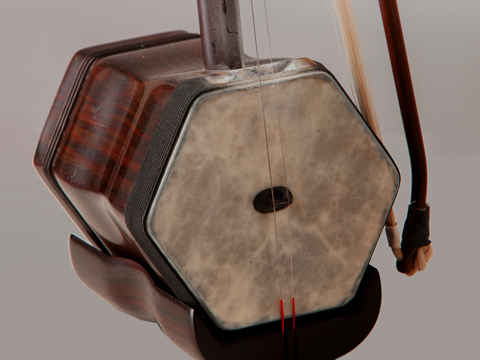
Instrument R&D
Eco-Huqins Chinese Instruments Standard Orchestra Instrument Range Chart and Page Format of the Full Score Configuration of the Orchestra
44th Orchestral Season
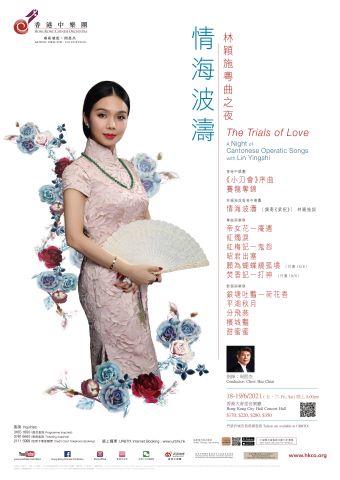
The Trials of Love - A Night of Cantonese Operatic Songs with Lin Yingshi
Prelude of Dagger Society (Soundtrack from the movie Buddha's Palm) Shang Yi
Cantonese Opera Aria with Orchestral Accompaniment
Reunion in the Nunnery from Princess Changping Libretto and Music Compilation by Tong Dik-sang Arr. by Tam Yat-sing
Cantonese Sung Music with Orchestral Accompaniment
Red Candle Tears Wong Yuet-sang Lyrics by Tong Dik-sang Arr. by Lo Wai Leung
Vocal and Orchestra
The Sweet Scent of the Water Lilies from Water Lilies in Bloom on a Silvery Pond Wong Yuet-sang Lyrics by Tong Dik-sang Arr. by Ng Cheuk-yin
Autumn Moon on a Placid Lake Lui Man-shing Lyrics by Zhou Zitao Arr. by Lo Wai Leung
The Parted Swallows Ancient Tune Lyrics by So Yung Arr. by Lo Wai Leung
Cantonese Opera Aria with Orchestral Accompaniment
I Wish to be a Butterfly that Always Stays by Your Tomb Song Written by Poon Yat-fan Arr. by Tam Yat-sing (Performed on 18/6 only)
Reprimanding the Gods at the Temple from Offering Incense to Mark a Lovers’ Pledge Song Written by Yang Zijing Arr. by Alfred Wong (Performed on 19/6 only)
The Dragon Boat Race He Liutang Arr. by Peng Xiuwen
Vocal and Orchestra
Belle in Penang Wong Yuet-sang Arr. by Lo Wai Leung
Sweet So Sweet (Dayung Sampan) Lyrics by Tony Indonesian Folk Song Arr. by Li Ying
Trials of Love After The Butterfly Lovers by He Zhanhao and Chen Gang Lyrics by Lin Yingshi
Cantonese Opera Aria with Orchestral Accompaniment
The Ghost’s Lament from The Reincarnation of a Beauty Song Written by Chen Guanqing Orch. by Peng Jiguang
Cantonese Sung Music with Orchestral Accompaniment
Wang Zhaojun Going Beyond the Frontier Lyrics by Ma Si-tsang Arr. by Kuan Nai-chung
Cantonese Operatic Songs – Moving with the Times
Chow Fan-fu
As the title of the concert ‘The Trials of Love – A Night of Cantonese Operatic Songs with Lin Yingshi’ suggests, the headliner is obviously the rising Cantonese opera star Lin. That said, even the artiste herself would not disagree that the real highlights of the show are the Cantonese operatic songs, for, without them, there would be no Lin Yingshi in this concert.
During the Qing Dynasty, when Cantonese opera was pared down to narrative singing performances, the field was dominated by blind female singers. In the early days of the Chinese Republic (early 20th century), Cantonese opera began to take on new looks, a modernized form of Cantonese sung music appeared, with female artistes emerging on the sing-song stage. The yuequ and yueju genres cross-fertilized, feeding off each other, and gained much popularity in the 1930s and 40s. The rapid growth of the recording industry also created a sharp demand for new vocal styles and new content. Cantonese sung music morphed from solo singing to ensemble performances, and saw a consolidation of the many musical styles and traditions of the South China region. They included yueou (Cantonese ballads), longzhouge (‘dragon boat songs’), muyuge (‘wooden fish songs’), nanyin (Southern tunes), Cantonese music, dadiao (‘major melodies’) and xiaodiao (‘minor melodies’).
In the past, teahouses, tea shops and herbal tea shops in Foshan, Guangzhou, Hong Kong and Macao were popular venues for performances of Cantonese sung music. During the 1930s and 40s, there were no less than 30 or 40 teahouses in Hong Kong which offered evening sessions. The boom led to the rise of outstanding professionals in the field, such as vocalists, composers etc.
In its development as a folk performing art, yuequ has for the past century always shown immense scope to keep pace with the times. For almost fifty years, Mandarin pop songs, pop songs, folk songs from all over the world, and even American and Western pop, jazz and songs from movie soundtracks, had been a huge source of melodic content for ‘borrowing’ and were incorporated into Cantonese tunes in the yuequ genre. The lyrics were diverse, as they could feature traditional and contemporary stories, with themes taken from Buddhist scriptures as well as Christian gospels. Thus, it can be said that Cantonese operatic songs have indeed moved with the times, and the field has developed a completely different outlook nowadays.
In addition to considering the impact of origin on yuequ’s development, the instruments providing rhythmic and harmonic accompaniment have also kept pace with changes in music trends. Western musical instruments have long been used to accompany Cantonese operatic arias. Likewise, full-size Chinese orchestras performing in combination with Cantonese operas is not something new either. Take Wang Zhaojun Going Beyond the Frontier in this concert as a case in point. Arranged by Kuan Nai-chung years ago, the piece is now part of HKCO’s stock repertoire. Nevertheless, the other songs in the programme are all newly arranged for performance with a large Chinese orchestra, and illustrates what may be deemed the contemporary 21st century look of yuequ.
A major characteristic of a large Chinese orchestra is its rich expressive power accorded by the instrumentation. So, when performing in conjunction with yuequ, it not only provides the accompaniment but also highlights the song’s content and therefore lends intensity to a performance. The combination of vocals by a solo singer and an orchestral backing can often add emotional depth, a stimulant that makes all the difference in Cantonese sung music.
Your Support
Friends of HKCO
Copyright © 2025 HKCO
